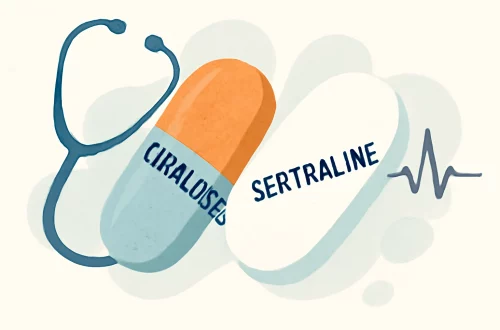-
Can I Take Tramadol with Gabapentin Safely?
Tramadol and Gabapentin are two commonly prescribed medications that serve different purposes. Tramadol is primarily used for pain relief, particularly in cases of moderate to moderately severe pain. As an opioid analgesic, it acts on the brain to alter the way the body perceives pain. Gabapentin, on the other hand, is often prescribed for nerve pain and is also used to treat seizures. It functions by stabilizing electrical activity in the brain and affecting the way nerves send messages to the brain. Both medications have gained popularity among healthcare providers due to their effectiveness in managing various types of pain and neurological conditions. However, with the increasing complexity of medication…
-
Can You Take Gabapentin and Tramadol Together Safely?
Gabapentin and tramadol are two medications commonly prescribed for pain management, yet many patients may question their combined use. Both drugs serve distinct purposes: gabapentin is primarily utilized for neuropathic pain and seizure disorders, while tramadol is an opioid-like analgesic effective for moderate to severe pain relief. The increasing prevalence of chronic pain conditions has led to a rise in the use of these medications, prompting discussions about their safety when taken together. Understanding how these medications work individually and in conjunction can be crucial for patients seeking effective pain management. Each drug interacts with different pathways in the brain and nervous system, potentially leading to enhanced pain relief when…
-
Can You Safely Take Gabapentin and Tramadol Together?
Gabapentin and tramadol are two medications that are commonly prescribed for pain management and neurological conditions. Gabapentin is primarily used to treat nerve pain and seizures, while tramadol is an opioid pain reliever that helps alleviate moderate to severe pain. The interaction of these two medications raises questions about their combined use, particularly regarding safety and efficacy. Patients often seek relief from chronic pain, and healthcare providers may consider prescribing both medications to enhance pain management strategies. However, the potential for interactions and side effects necessitates a careful evaluation. Understanding how these drugs work individually and together is crucial for anyone considering this combination. The complexities of pain management, the…
-
Gabapentin: How Long Does It Stay in Your System?
Gabapentin is a medication widely used to treat neuropathic pain, seizures, and certain anxiety disorders. As a prescription drug, it belongs to a class of medications known as anticonvulsants. Patients often seek information about how long gabapentin stays in their system, especially when preparing for drug tests or considering the impact of the medication on their daily lives. Understanding the pharmacokinetics of gabapentin can provide valuable insights into its duration of action, potential side effects, and implications for usage. Factors such as individual metabolism, dosage, and frequency of use can significantly influence how long the drug remains detectable in the body. As with any medication, it is essential to approach…
-
Gabapentin: How Long Does It Stay in Your System?
Gabapentin is a medication commonly prescribed to treat various conditions, including epilepsy, neuropathic pain, and anxiety disorders. As a member of the gabapentinoid class of drugs, it works by affecting neurotransmitters in the brain, helping to reduce the perception of pain and stabilize electrical activity. While gabapentin is generally considered safe and effective for many patients, it also raises important questions about its pharmacokinetics—specifically, how long it remains in the body after administration. Understanding the duration of gabapentin in the system is crucial for patients and healthcare providers alike, as it can influence treatment decisions, potential side effects, and drug interactions. The metabolism, excretion, and overall duration of gabapentin in…
-
Exploring Natural Alternatives to Gabapentin for Pain Management
Managing pain effectively can be a complex journey, often leading individuals to explore various treatment options. One widely prescribed medication for neuropathic pain is gabapentin, known for its efficacy in treating conditions such as fibromyalgia and diabetic neuropathy. However, like many pharmaceuticals, gabapentin comes with a range of potential side effects and risks, prompting many to seek alternative solutions. The growing interest in natural alternatives reflects a broader trend towards holistic health approaches. These alternatives often encompass lifestyle changes, dietary adjustments, and the incorporation of herbal remedies, all of which can complement traditional medical treatments or serve as standalone options. As individuals become more informed about their health, the desire…
-
Understanding Gabapentin and Tramadol Interaction Risks
Understanding the interaction risks between medications is crucial for anyone who is undergoing treatment for pain, anxiety, or other chronic conditions. With the rise in prescription drug use, especially in the realm of pain management, it becomes increasingly important to understand how different drugs can affect one another. Gabapentin and Tramadol are two commonly prescribed medications that serve distinct purposes but share a commonality in their use for pain relief. Gabapentin is primarily utilized to treat nerve pain and seizures, while Tramadol is an opioid pain reliever often prescribed for moderate to moderately severe pain. The intersection of these medications can lead to complex interactions that may have significant implications…
-
Can I Take Gabapentin with Tramadol Safely and Effectively?
The use of prescription medications has become increasingly common, particularly for managing chronic pain and neurological conditions. Among these medications, Gabapentin and Tramadol are frequently prescribed for their respective therapeutic effects. Gabapentin is primarily used to treat nerve pain and seizures, while Tramadol serves as a pain reliever for moderate to moderately severe pain. As patients may often find themselves on multiple medications, the question arises: can Gabapentin and Tramadol be taken together? Combining medications can sometimes enhance efficacy, but it can also lead to increased risks and side effects. Understanding their individual mechanisms, potential interactions, and how they may affect your overall health is essential before making any changes…
-
Can You Safely Take Tramadol With Gabapentin Together?
Tramadol and gabapentin are two medications commonly prescribed for pain relief and managing nerve-related conditions. As the landscape of pain management evolves, many patients find themselves on multiple medications to address their symptoms. This raises important questions regarding the safety and efficacy of combining these drugs. Tramadol is an opioid pain reliever that works on the brain’s pain receptors, while gabapentin is primarily used to treat nerve pain and seizures. Both medications have distinct mechanisms of action, which can lead to concerns about potential interactions and compounded side effects when used together. Navigating the complexities of medication management can be overwhelming for patients, particularly when multiple prescriptions are involved. Understanding…
-
Can Tramadol Be Safely Taken With Gabapentin?
Tramadol and gabapentin are two medications commonly prescribed for pain management and neurological conditions. Both drugs serve distinct purposes: tramadol is primarily used for moderate to severe pain relief, while gabapentin is often prescribed to treat nerve pain and seizures. Despite their different mechanisms of action, patients may find themselves in situations where they might be prescribed both medications simultaneously. This raises important questions regarding the safety and potential interactions of using these two drugs together. When managing chronic pain or neurological disorders, understanding the effects of combining medications is essential. Patients need to be aware of how each drug works, their side effects, and the possible risks involved in…




































